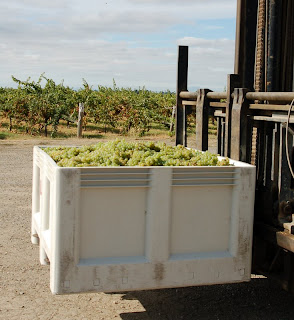
One of the main reasons for
Vinomaker wanting to make
Chenin blanc this year was a challenge from a fellow winemaker to participate in a 2009 'ferment-off'. This winemaker had given us a bottle of his 2008
Chenin blanc to drink and also the contact information for the grower. We chilled the wine down. It seemed nice at first, well balanced acid, nice fruity esters and then, as it warmed up,
bam! Cabbage!
My tasting descriptors tend to be of the first thing that comes to my mind and this time, like one of the veggies in a good Sunday roast, cabbage it was.
Vinomaker got more bad eggs than cabbage, so he initially identified the problem as H
2S, or more seriously methyl
mercaptan. H
2S produces smelly,
odoriferous sulphur compounds that may have developed in the wine because of poor fermentation practices. Time for the old copper penny routine.
A United States one cent piece,
pre-1982, is 95% copper...drop one into a stinky wine and
The Great Emancipator frees the bonds of sulphurous servitude and
undesirable compounds. The metal in the coin reacts with the H
2S in the wine, converting it into insoluble copper sulphide. It is rather rapid chemistry and what it usually means is that the previously stinky wine is now drinkable.
However, that was not the end of this little malodorous matter, the wine had actually moved beyond that and the problem was one of the compound methyl
mercaptan.
Vinomaker, where are you?
 Whilst walking the Vinodogs this evening after work, I noticed that the folks at Far Niente had decided to night harvest their Chardonnay vineyard that's closest to Vinoland. So, before I ran off to my evening class at NVC, I stopped to take a photograph of the preparations, portable lights in place and half ton picking bins just out of the shot.
Whilst walking the Vinodogs this evening after work, I noticed that the folks at Far Niente had decided to night harvest their Chardonnay vineyard that's closest to Vinoland. So, before I ran off to my evening class at NVC, I stopped to take a photograph of the preparations, portable lights in place and half ton picking bins just out of the shot.









